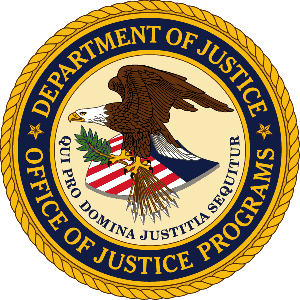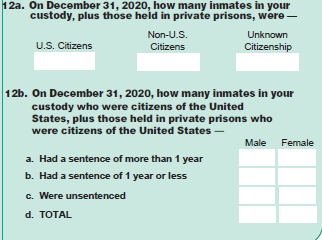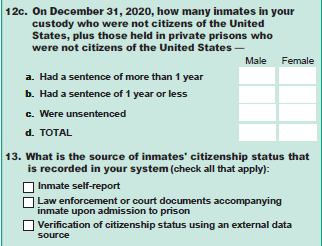July 2021 Memo on NPS Nonsubstantive Change
nps_nonsubstantive_change_memo_07282021.docx
National Prisoner Statistics-Prison Population Reports: NPS-1B, Summary of Sentenced Population Movement
July 2021 Memo on NPS Nonsubstantive Change
OMB: 1121-0102

U.S. Department of Justice
Office of Justice Programs
Bureau of Justice Statistics
Washington, D.C. 20531
MEMORANDUM TO: Robert Sivinski
Office of Management and Budget (OMB)
THROUGH: Doris J. James, Acting Director, Bureau of Justice Statistics (BJS)
Devon Adams, Acting Deputy Director, BJS
Kevin Scott, Acting Deputy Director, BJS
Joseph Conklin, Senior Statistician, BJS
Richard Kluckow, Unit Chief, Corrections Statistics Unit, BJS
FROM: E. Ann Carson, Statistician, Corrections Statistics Unit, BJS
SUBJECT: Nonsubstantive change request to the National Prisoner Statistics program: OMB Control No: 1121-0102 (exp. 01/2023)
DATE: July 28, 2021
The Bureau of Justice Statistics (BJS) is requesting a nonsubstantive change to the data collection form National Prisoner Statistics program (OMB Control No: 1121-0102, expiration 01/2023). BJS is proposing to remove several questions on the citizenship of prisoners in the custody of state/federally or privately operated facilities that were recently added. The questions have confused respondents, despite OMB-approved changes in 2020 to clarify the concepts, and the resulting data are not comparable across states without significant analysis. BJS would like to return to the form of the question asked on NPS-1B forms prior to 2017, with slight modifications.
In November 2019, BJS submitted a request to renew, with change, the NPS collection through January 2023. BJS sought to better understand the measurement of citizenship among prisoners by asking respondents to report both the number of U.S. citizens and non-U.S. citizens. BJS intended for respondents to exclude prisoners of unknown citizenship from their counts. However, results from the data collected during 2019 suggest that multiple states assumed that prisoners of unknown citizenship were U.S. citizens and included them in that count.
In October 2020, BJS submitted a nonsubstantive change request memo to OMB to add a box that captured the number of prisoners of unknown citizenship (Figure 1, question 12a). The sentence-length and sex breakdown of U.S. citizens and non-U.S. citizens remained the same (Figure 1, questions 12b and 12c). The addition of the unsentenced non-citizen counts proved useful, since it allowed BJS to sum the three subpopulations (U.S. citizens, non-U.S. citizens, and prisoners of unknown citizenship) to confirm that respondents were providing counts of persons in their physical custody and held in private prisons. Because the percent of non-U.S. citizens in each jurisdictions’ prison population is a statistic of interest published annually in BJS’s Prisoners reports, it is important to use the correct denominator, particularly for states that house a portion of their prisoners in local jails, which are not intended to be included in the NPS-1B citizenship count.
Figure 1. 2020 NPS-1B citizenship questions


Despite clear direction to base the counts of U.S. citizens, non-U.S. citizens, and prisoners of unknown citizenship on the number of prisoners in the jurisdiction’s physical custody and private prisons, the 2020 results showed that only 19 respondents followed these instructions. Thirteen states based their citizenship statistics on their jurisdiction population count (legal authority, so they included persons held in local jails as well as other state prisons), and six other states reported citizenship statistics based on their reported physical custody count (not including persons in private prisons). Six used some population count that did not appear to be based on prisoners either in physical custody or under legal authority, including two states that reported total populations exceeding the number of prisoners they report in their jurisdiction.
Additionally, five states refused to provide citizenship statistics in 2020, including California. The most recent year California reported non-citizen data was 2012, when it accounted for 16% of the total number of non-U.S. citizens held in state and federal prison, and almost twice the number of non-U.S. citizens as held in Texas, the state with the next-highest number of non-U.S. citizens held. An additional two states indicated that they would not report citizenship counts to the NPS-1B collection in 2021, and three others complained about the additional burden imposed by requesting sentence length breakdowns of citizens and non-citizens.
BJS first considered adding questions to the NPS-1B form to have respondents designate the population count to use as a denominator, but ultimately decided that based on the burden argument, we should instead reevaluate all the citizenship questions to see if they could be altered or even removed to make the survey less burdensome. In the most recent three Prisoners reports, BJS presented the total number of non-U.S. citizens by sex for each state and the Federal Bureau of Prisons (BOP), and this same disaggregation for non-U.S. citizens who were sentenced to more than one year. The percentage of non-U.S. citizens in the states’ and BOP prison populations were also published.
In considering the removal of some of the citizenship questions, BJS compared the sentence length distribution of U.S. citizen state and federal prisoners with those of non-U.S. citizens, and did not find significant differences in the percentages of both groups sentenced to more than one year, sentenced to one year or less, or were unsentenced. There were, however, differences between citizens and non-U.S. citizens by sex in the state and federal prison population, with a smaller percentage of female non-U.S. citizens imprisoned than in U.S. citizens.
To reduce burden on respondents, BJS proposes removing the sentence length and citizenship determination questions for both U.S. citizens and non-U.S. citizens (In Figure 1, questions 12b, 12c, and 13). Instead, it will request counts of citizens, non-U.S. citizens, and prisoners of unknown citizenship by sex, and then request respondents indicate whether their counts are based on a physical custody plus private prisons population, custody only population, jurisdiction population, or something else (see Figure 2, questions 12 and 13). This will allow BJS to continue to provide sex-specific counts and distributions of non-U.S. citizens imprisoned under state and federal correctional authorities. Since citizenship status is currently captured for most state and federal prisoners through the individual-level National Corrections Reporting Program (OMB Control No 1121-0065, exp. 11/2021) and the BOP data provided to BJS for the Federal Justice Statistics Program, BJS should be able to recreate a sentence length distribution for both populations using alternative sources.
Figure 2. Proposed citizenship questions for 2021 NPS-1B collection

BJS anticipates that with the removal of the sentence length breakdown, there will be a 5-minute reduction in burden for each respondent to the NPS-1B.
| File Type | application/vnd.openxmlformats-officedocument.wordprocessingml.document |
| File Modified | 0000-00-00 |
| File Created | 2021-08-02 |
© 2026 OMB.report | Privacy Policy